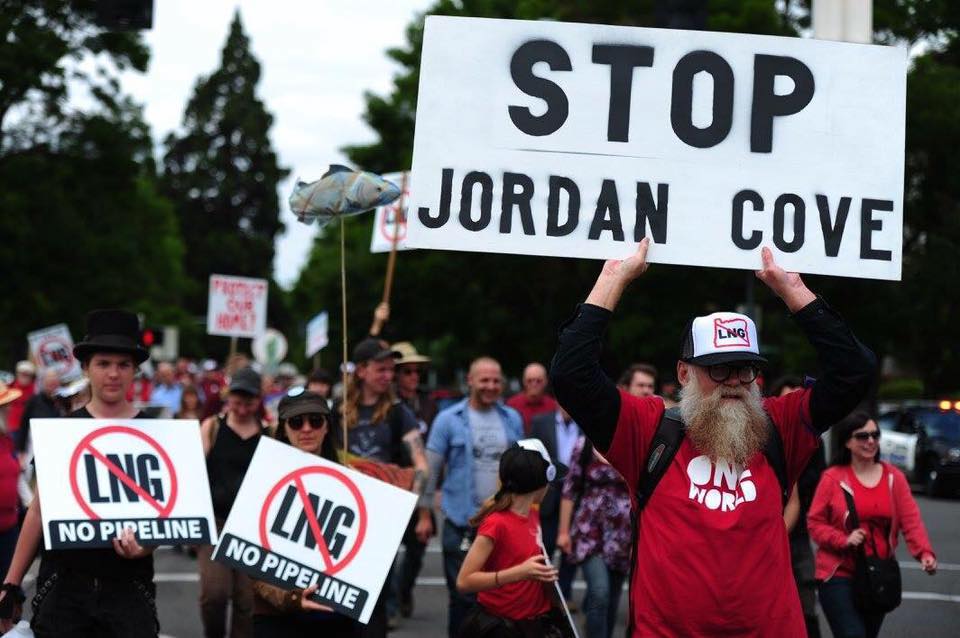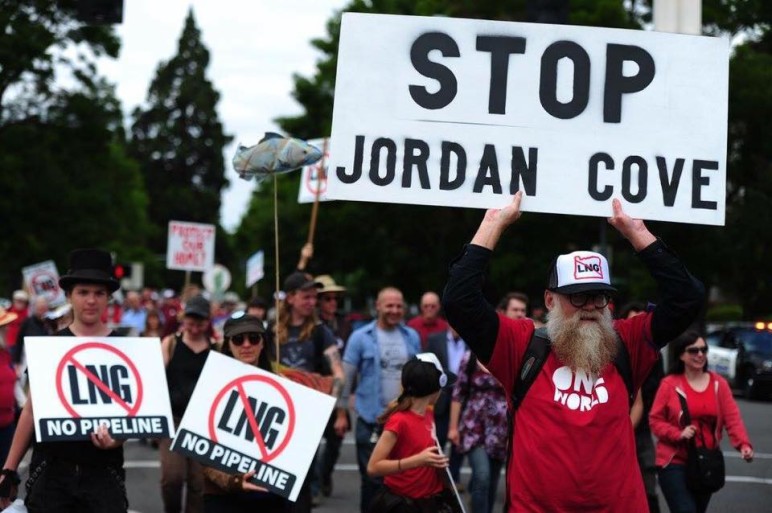Editor’s note: This article originally appeared on Oil Check Northwest. It it reprinted here with permission.
Earlier this month, in a decision that caught everyone from activists to the Governor’s office by surprise, the Federal Energy Regulatory Commission (FERC) rejected plans to build a massive liquefied natural gas (LNG) export terminal, known as Jordan Cove, in Coos Bay, Oregon. The project also would build a pipeline cutting across more than half the state.
“Because the record does not support a finding that the public benefits of the Pacific Connector Pipeline outweigh the adverse effects on landowners, we deny Pacific Connector’s request…to construct and operate the pipeline,” the FERC order read. FERC’s permit denial meant that project backers—Veresen, Inc., a Canadian energy company, and pipeline operator, the Williams Partners—would not be able to begin construction of the Jordan Cove Energy Project.
FERC’s judgment was heralded as a long-awaited victory by those who have been fighting the project for more than a decade. Lost in the headlines, however, was its window for the project still to be built.
Opposition to Jordan Cove LNG
Leading up to FERC’s decision, it had not been an easy road for Jordan Cove. Its two backing companies failed to negotiate deals with 90% of residents along the 232-mile pipeline path and would likely have relied heavily on federal eminent domain law. This practice of seizing private land (and compensating owners accordingly) for a project deemed in the public interest is a controversial legal tool, and one that is especially reviled in rural Oregon.
Residents of Coos Bay and the surrounding region also raised serious concerns. The small city would see up to two massive oceangoing vessels per week carrying LNG to Asia, raising the risk of spills and increasing traffic for the trade dependent region. Jordan Cove would be Oregon’s single largest source of pollution, fostering both local and global concerns. Furthermore, natural gas pipeline leaks recently have become a terrifying prospect for many after California’s Porter Ranch disaster. Outside Los Angeles, a well couldn’t be capped for 4 months, and after locals became sick in droves, all 11,000 residents of nearby Porter Ranch had to be evacuated.
The decision against Jordan Cove was an important victory, but developments this week show that project backer Veresen is gearing up for another fight.
How the project has already come crawling back
Jordan Cove’s LNG would be shipped entirely to Asia, where demand has been notoriously volatile. FERC’s decision made it clear that because demand for LNG in places like China, Japan, and Korea has been so unstable, the project’s viability was in question. FERC made it clear that demand for LNG wasn’t strong enough, and therefore, the project’s benefits did not outweigh impacts to landowners and the environment.
But FERC left Veresen a chance to reapply for permits if the company could prove significant demand for LNG. Unfortunately for concerned Oregonians, that’s exactly what happened this week.
On Tuesday, March 22, Japan-based Jera Co., Inc., signed an agreement with Veresen to purchase 1.5 million of the facility’s estimated 6 million tons of annual LNG capacity. While details of the proposal are still being finalized, this announcement puts Jordan Cove right back into the mix.
Big hurdles remain. Oregonians still have the same concerns, and opposition against the project and pipeline remain fierce. Backers will have to undergo what is likely to be a contentious permitting process, and FERC still could deny the project based on previously cited concerns. Veresen will also likely seek more agreements to solidify its position that the project is financially viable, but the deal with Jera alone gives this project new life.
In short, we have to rewrite some headlines: Jordan Cove is anything but dead.









